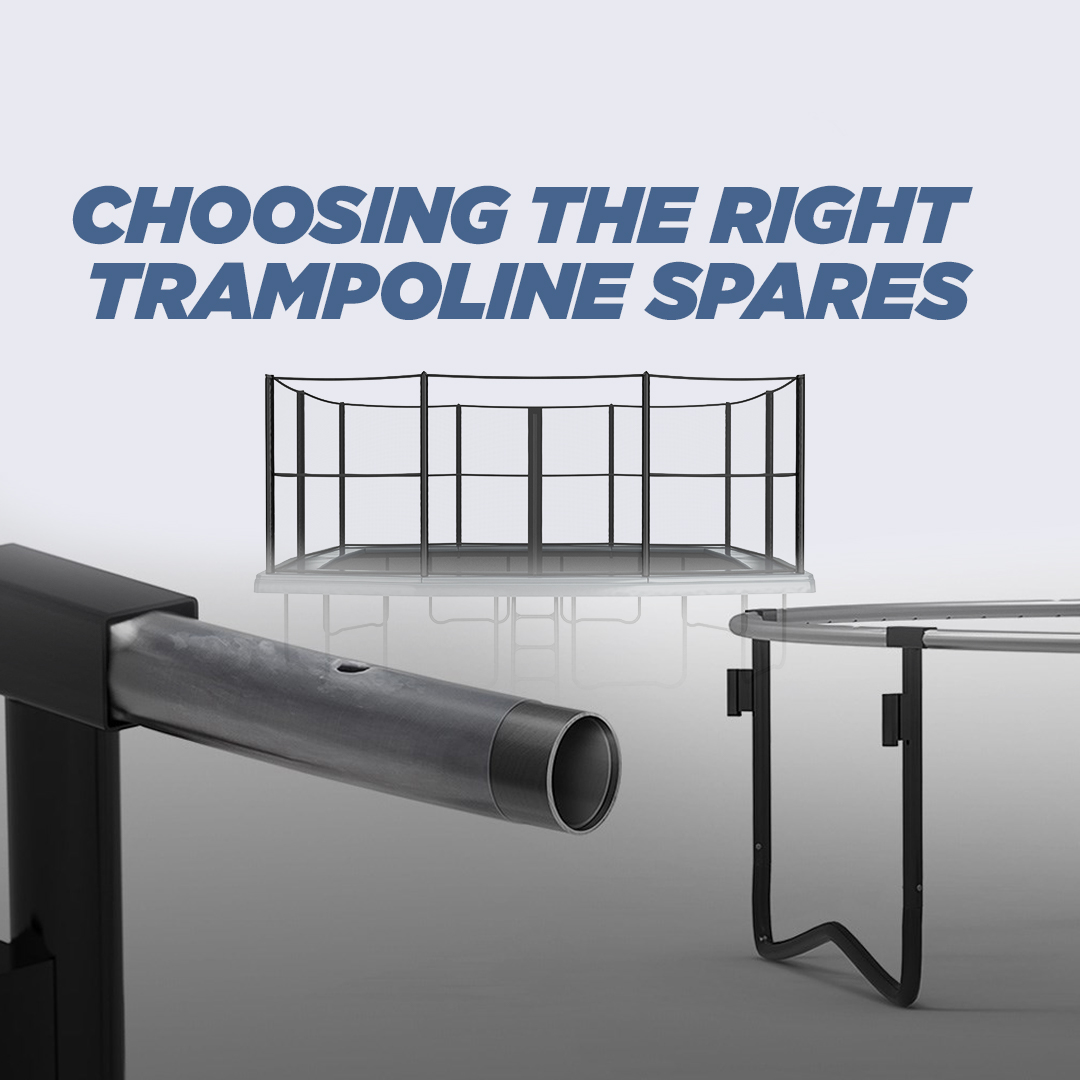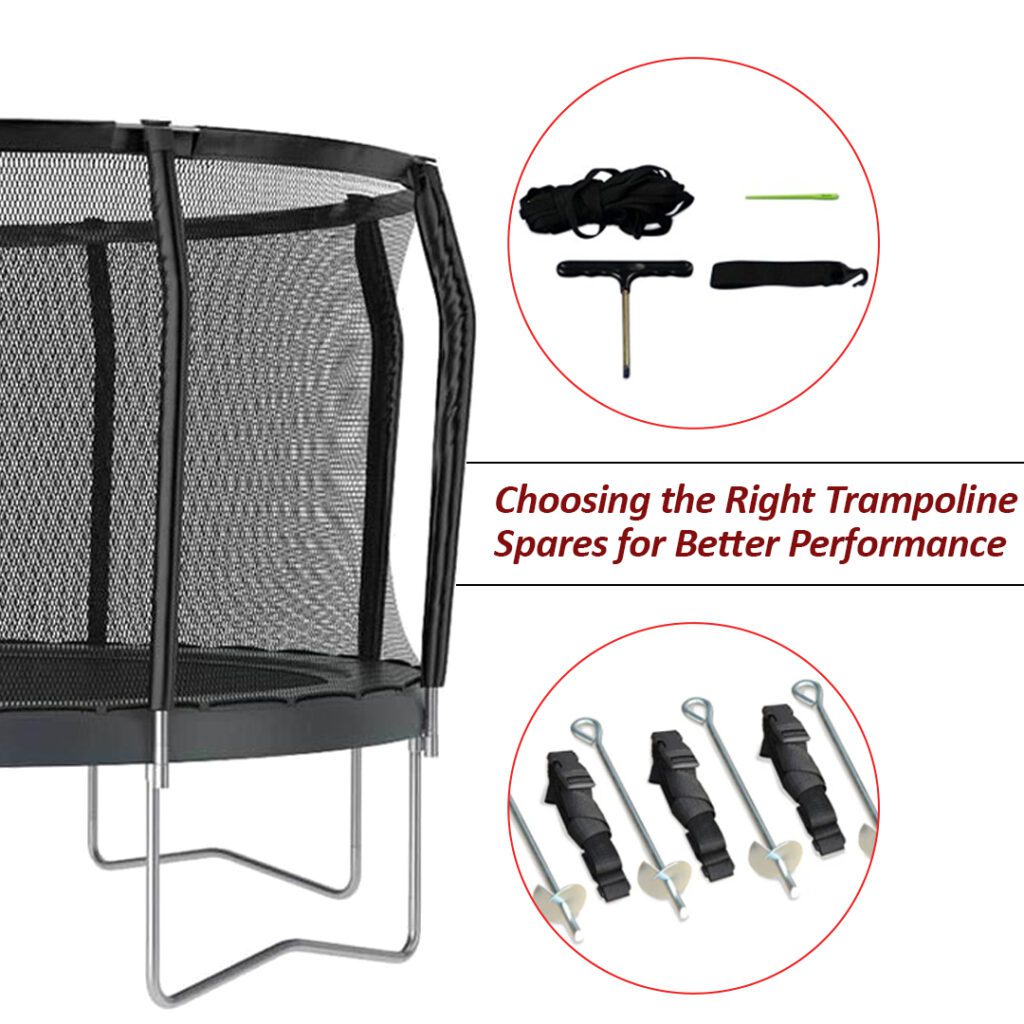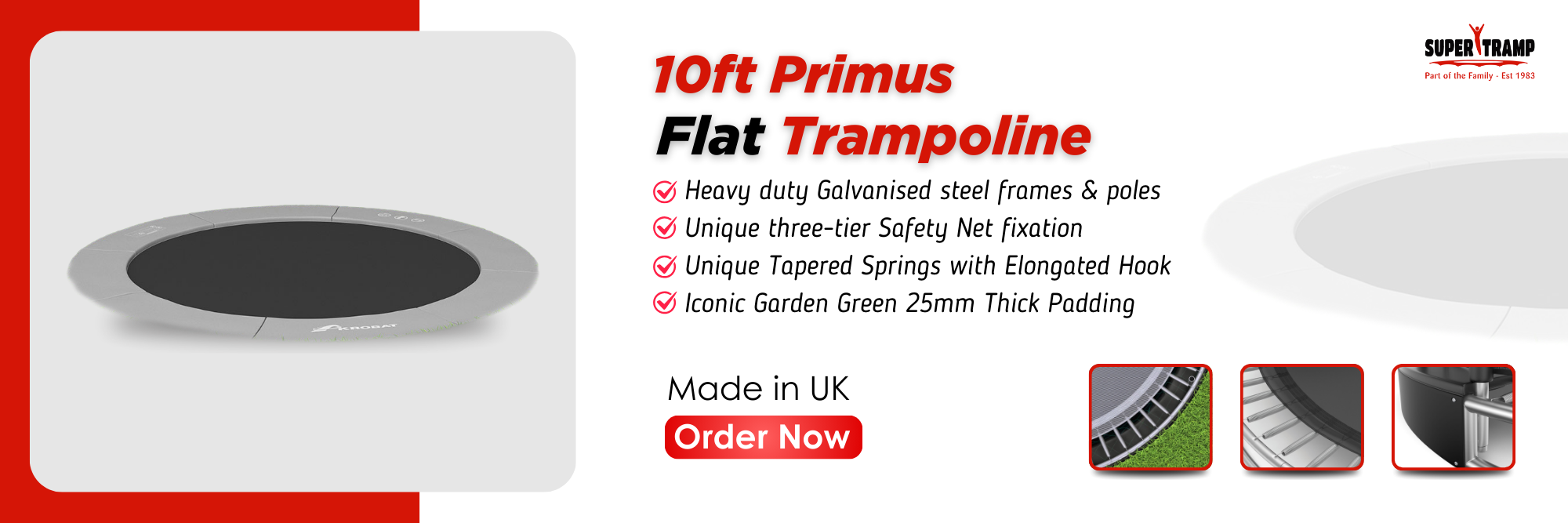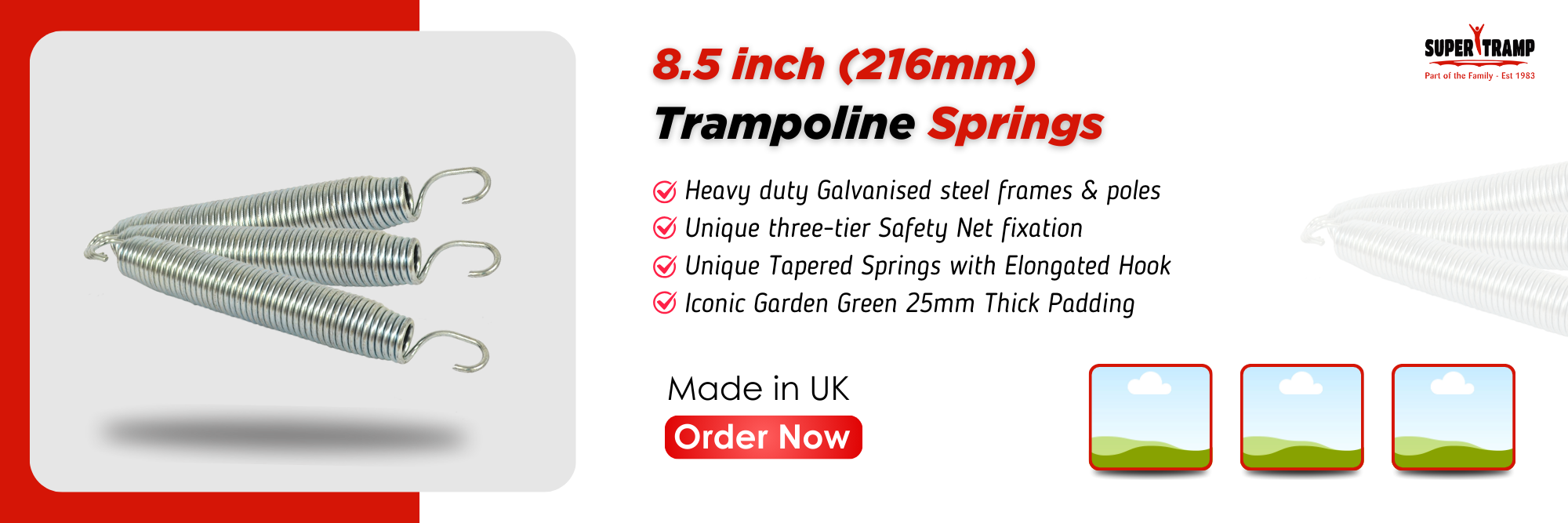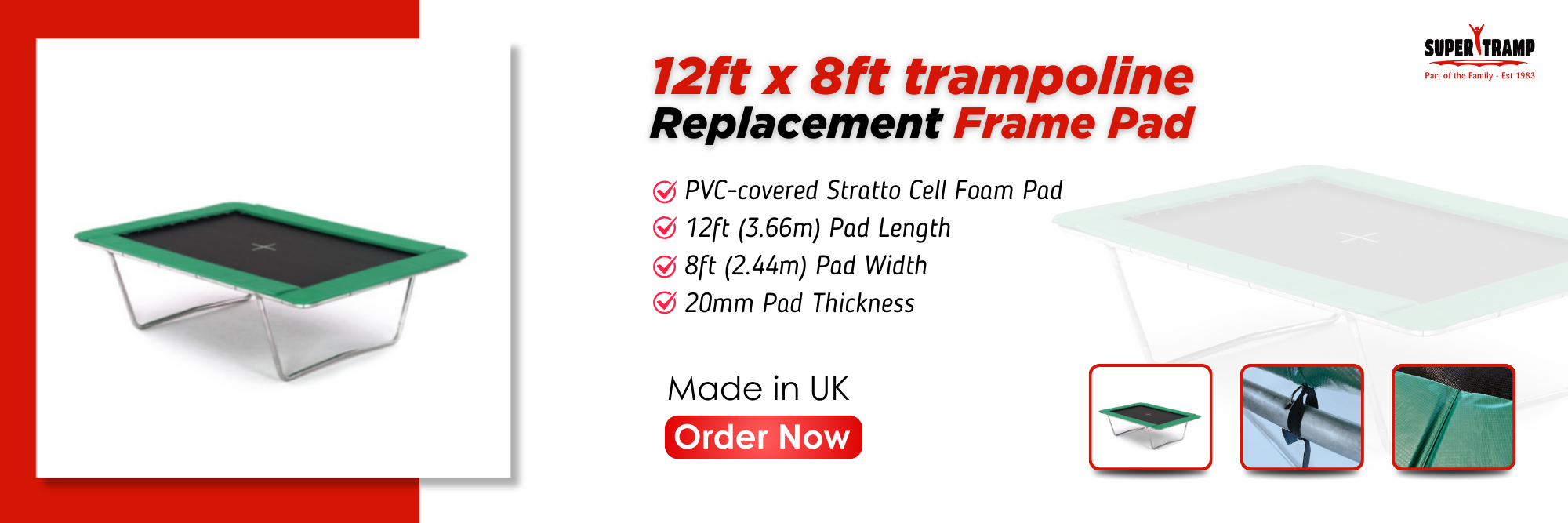A trampoline can provide a fun recreational activity for children and adults. However, to maximise safety, performance, and durability, you must choose high-quality trampoline spares – the various replacement parts for different trampoline components. The correct set of trampoline spares will ensure your trampoline lasts longer and functions appropriately.
Table of Contents
ToggleTrampoline spares come in various types, styles, sizes and materials. The spares you choose depend on your trampoline’s specifications, budget, and needs. By understanding each spare’s role and selecting high-quality, long-lasting options, you can keep your trampoline safe and ensure maximum bouncing enjoyment for years to come.
In this blog, we will explore the different types of trampoline spares, factors to consider when choosing spares, recommended brands, and tips for ensuring maximum safety and performance.
Identifying Common Trampoline Issues
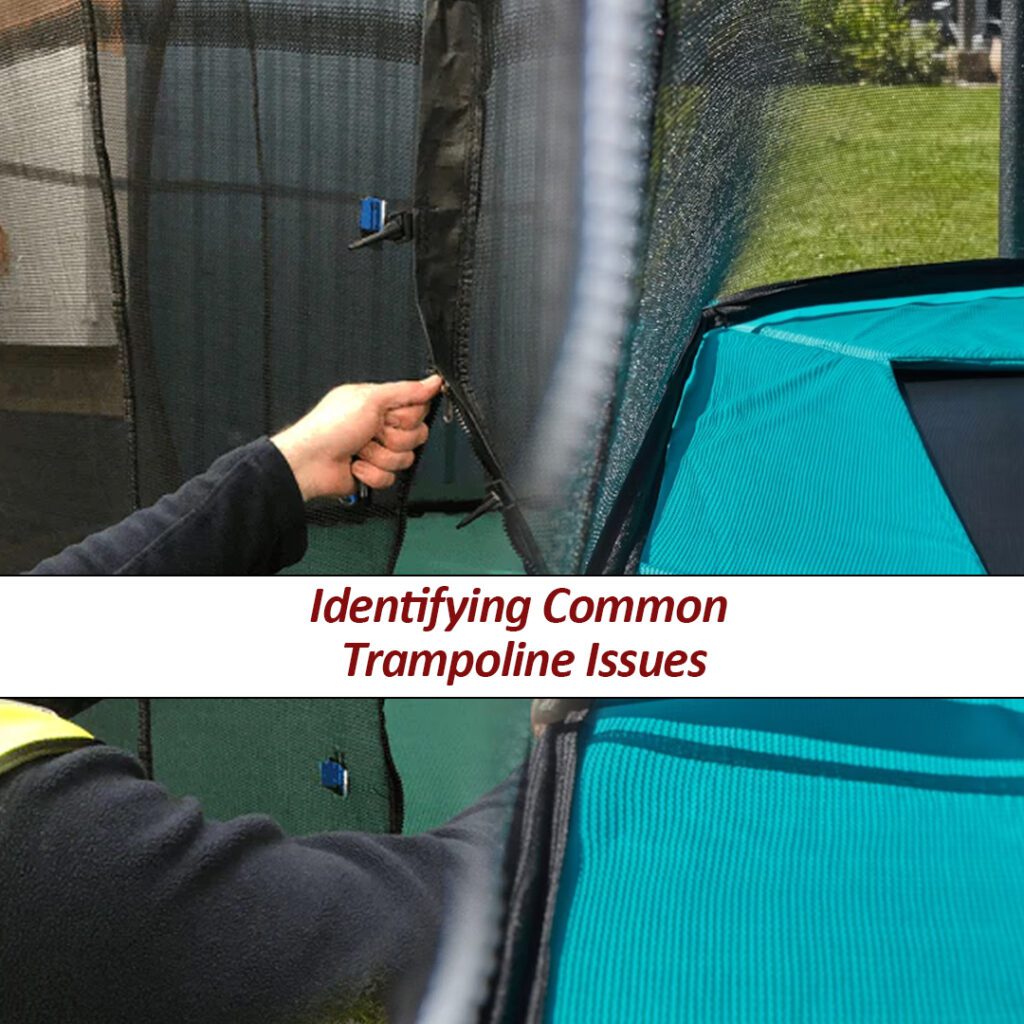
Over time, trampolines experience wear and tear that can impact performance and safety. Identifying potential issues early on allows you to perform necessary trampoline repairs or part replacements to keep your trampoline in tip-top shape.
Springs
The springs connect the frame to the mat, supporting your weight during jumps. As springs age and weaken, they won’t provide as much lift or bounce. You may notice the mat sagging in areas or feeling “dead spots” where the springs aren’t rebounding properly. It’s best to replace all springs at once to ensure even performance and avoid injury.
Trampoline Bed
Trampoline beds experience the most stress and will eventually need replacement. Look for tears, holes or areas where the mat has visibly thinned or frayed, especially if you are setting up an in ground trampoline. A deteriorating mat won’t have the same elasticity, making landings feel harder. It may also allow small objects to pass through to the springs below. For safety, replace your mat if there are any signs of damage or every 5-7 years with average use.
Safety Pad
The safety pad covers the springs and frame, protecting jumpers from pinches and lacerations. Over time, the pad can fade, rip, or detach from the velcro attachments. If the pad is damaged or lacks full coverage, replace it to avoid potential injuries. Look for a thick, high-density foam pad designed for your trampoline model.
Enclosure Net
For trampolines with safety nets, inspect the netting for any tears, holes or damage and replace as needed. The net should fully enclose the trampoline and be securely attached to avoid entrapment or falls as trampoline net makes it safer. Any signs of damage or detached areas require replacement to ensure safety.
By routinely inspecting your trampoline and replacing parts when necessary, you can maximise performance, avoid injury risk and keep your trampoline bouncing for years. Performing regular maintenance and part replacements is critical to safe, enjoyable jumping.
Choosing the Right Trampoline Spares
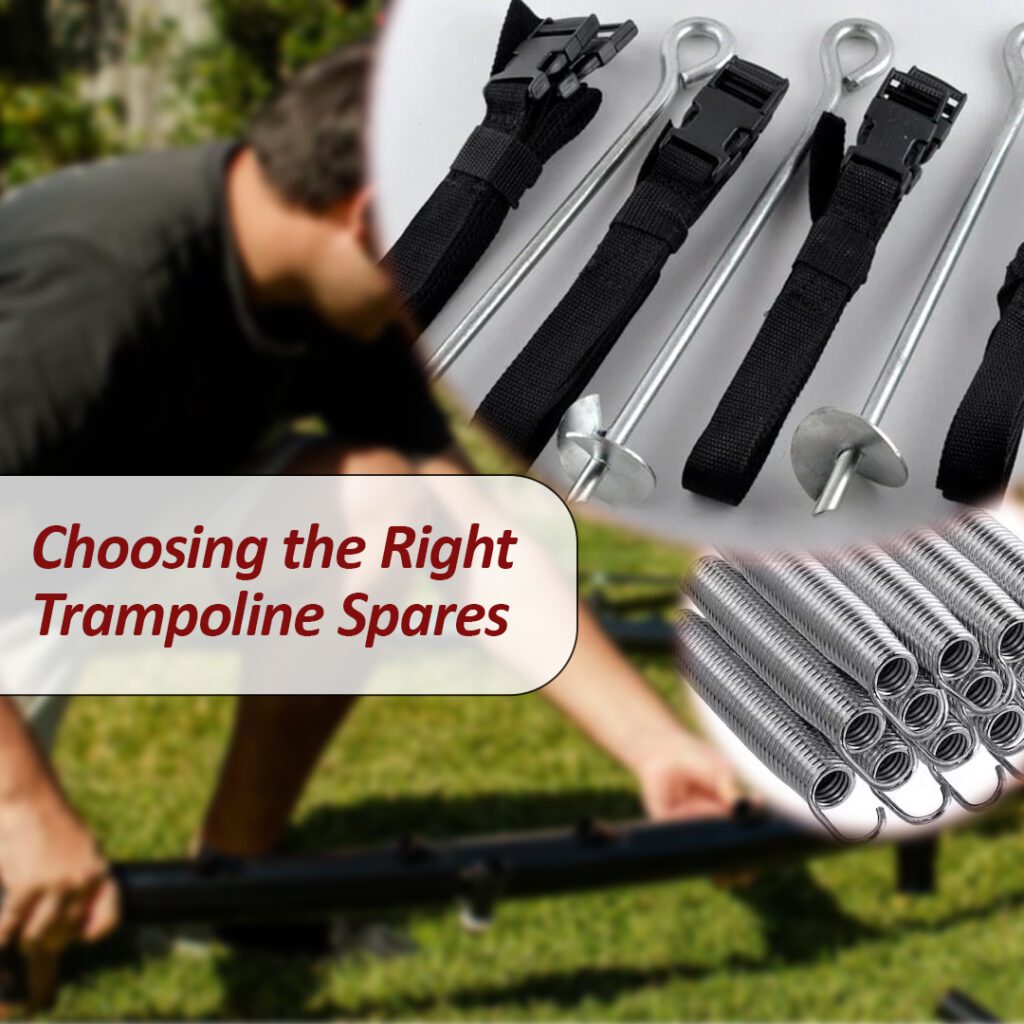
When replacing parts on your trampoline, choosing the correct spares is essential for safety, performance and longevity. Consider the following factors to ensure you get compatible, high-quality components:
Size and Weight Limit
Get spares that match your trampoline’s size from 10ft trampoline to 14ft trampoline. Springs, mats, pads and nets should all be appropriately rated for your trampoline. Using undersized or oversized parts can affect bounce, stability and safety.
Material and Construction
Look for weather-resistant, UV-treated materials that will withstand exposure to the elements. Galvanised steel springs and frames prevent rusting. Polypropylene mats and pads resist fading and wear. Reinforced netting made of high-density polyethene (HDPE) mesh will last longer. Check that all parts meet or exceed RoSPA safety standards.
Brand and Model Compatibility
For the best performance, purchase spares from your trampoline manufacturer and check that the part numbers match your specific model. Parts from different brands or models may not fit properly and can void warranties. When in doubt, contact your trampoline maker to confirm compatibility.
Installation
Make sure any spares you buy come with clear installation instructions. Springs, mats, pads and nets must be properly installed to function safely. If replacing multiple parts at once, install them in the correct order according to the manufacturer’s directions.
Choosing high-quality spares that match your trampoline’s specifications will keep all parts working together as intended for safer bouncing and many years of family fun. Focusing on factors like size, weight limit, materials, brand compatibility, and ease of installation will help ensure you get the correct trampoline spares for optimum performance.
Trampoline Springs
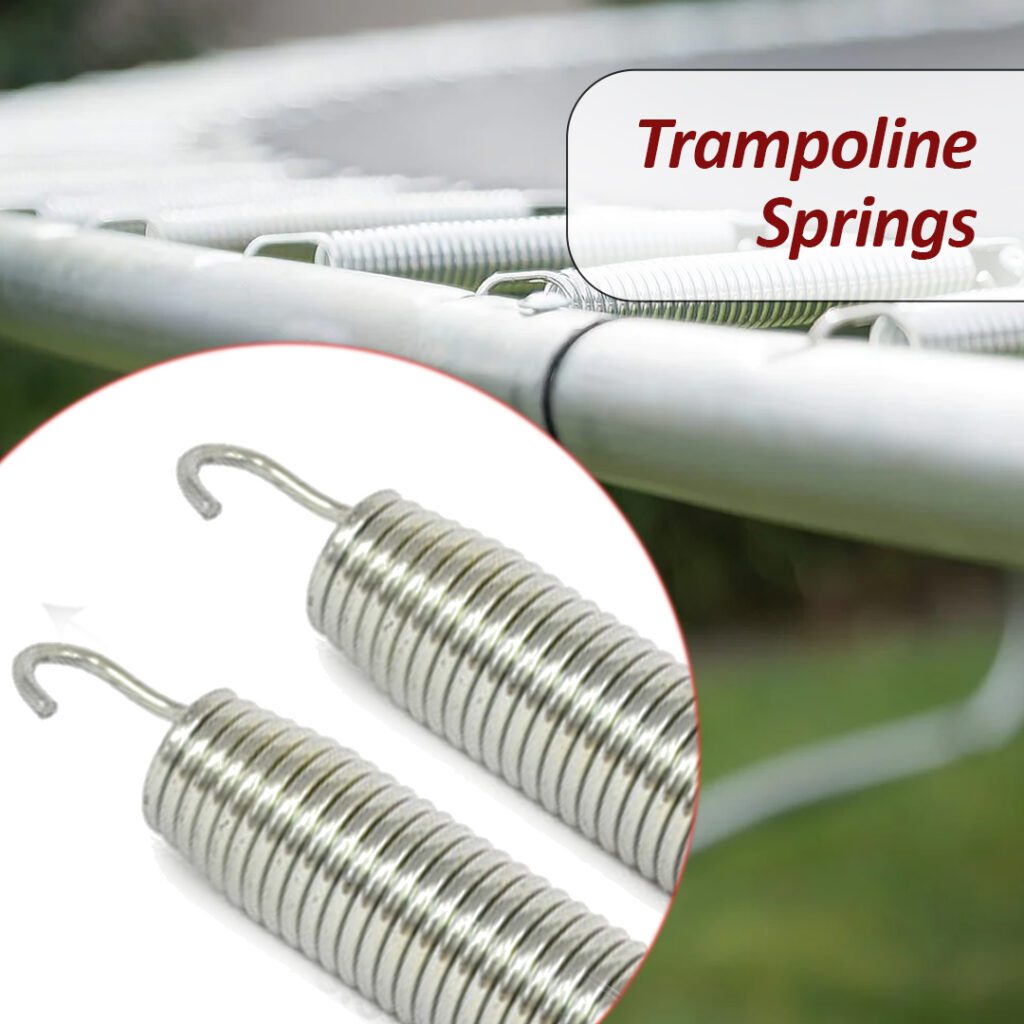
Springs on your trampoline are critical for providing bounce and absorbing impact. Over time, springs lose tension and become fatigued, compromising performance and safety. It’s essential to inspect your trampoline springs regularly and replace them when needed.
Several signs indicate it’s time for new springs:
- Little to no bounce – If you’re not getting much lift or finding it hard to jump high, your springs have likely lost tension.
- Visible rust or damage – Corrosion and breaks in the springs mean they can no longer handle the stress and should be swapped out.
- Noisy squeaking or grinding – Strange noises from the springs are a warning sign they are failing.
- Sagging mat – If your jumping mat is starting to droop in areas, the underlying springs have weakened.
Why High-Quality Springs Matter
The springs generate the trampoline’s bounce and support the weight of jumpers, so they undergo a lot of stress. Inferior springs will fatigue and break down faster, compromising safety. High-quality galvanised steel springs, preferably with a minimum 5.5 inch length and rated for your trampoline size, will last longer and perform better.
Though more expensive up front, premium springs are a worthwhile investment for maximizing your trampoline’s lifespan and avoiding premature spring replacement. Look for springs with these attributes:
- Galvanised or powder-coated steel: Resists rust and corrosion.
- Tapered ends: Easier to attach and remove, less likely to snag or scratch.
- Safety rated for trampoline: Properly rated to contain energetic jumping.
- Reputable brand: Choose a brand known for durable, high-performing parts.
Regularly inspecting your trampoline springs and replacing them with high-quality parts when needed keep your trampoline bouncing for years to come. Performing routine maintenance and using premium replacement parts is critical to safety, performance and longevity.
Frame Pads
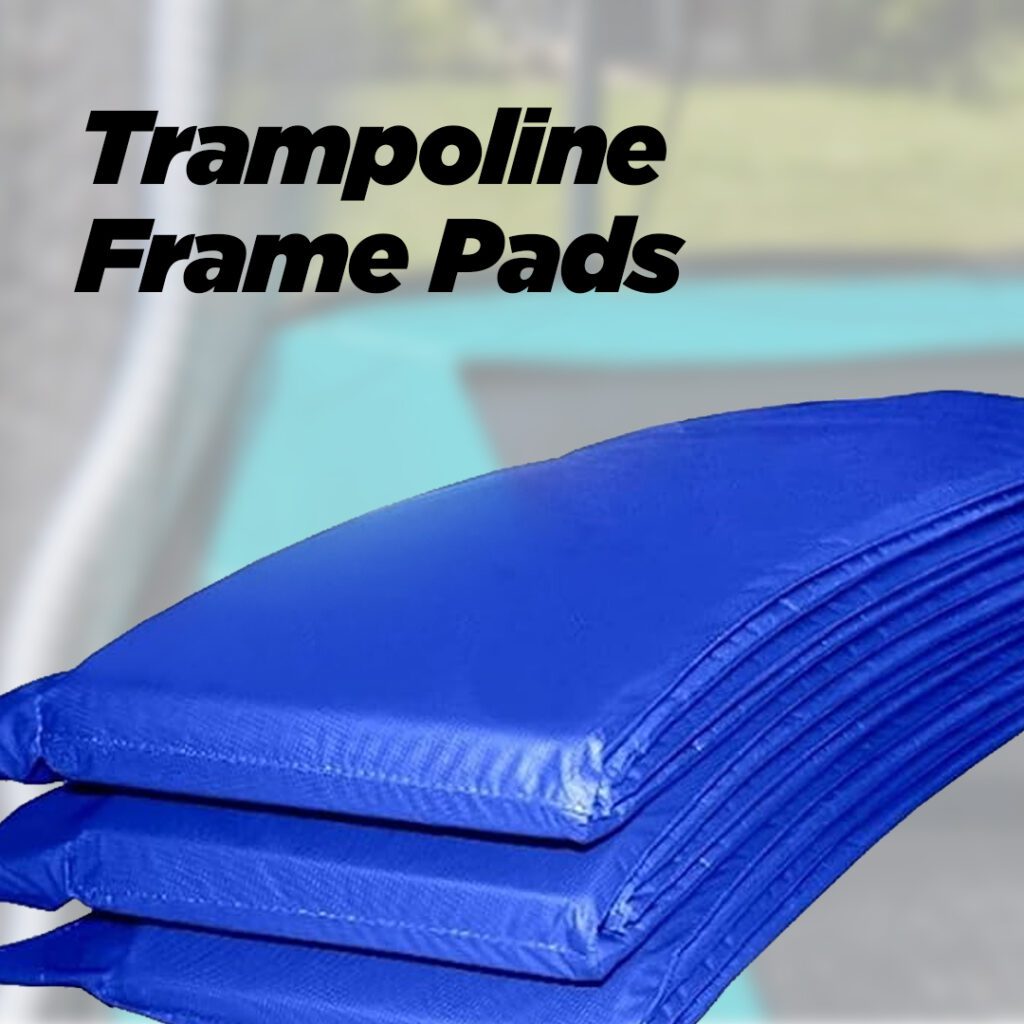
Frame pads are one of the most essential accessories for any trampoline. They provide padding around the springs and frame to prevent injuries from collisions. Investing in high-quality frame pads should be a top priority when choosing trampoline spares.
Safety First
The primary purpose of frame pads is safety. They cushion the hard edges of the trampoline frame and springs, minimising the risk of broken bones, bruises, and lacerations if a jumper falls or lands on the edge of the mat. For children and beginners, frame pads are essential. Look for pads specifically designed for your trampoline model to ensure complete coverage.
Durability Matters
Durability is vital since frame pads take the brunt of weather exposure and frequent impacts. Look for pads made of strong, weather-resistant materials like high-density foam encased in rugged vinyl. Pads with double or triple stitching, reinforced edging, and sturdy straps or Velcro closures will last longer. Check reviews to determine how well different pads stand up to outdoor conditions and active use.
A Snug Fit
Loose pads won’t provide maximum protection. Pads should cover the entire frame and spring area with no gaps and stay securely in place during use. Straps, ties, or Velcro around the edge of the pad allow for adjustments to ensure a snug fit. For the most active or competitive jumpers, pad attachments that wrap around individual springs may provide the most stability.
Trampoline Beds
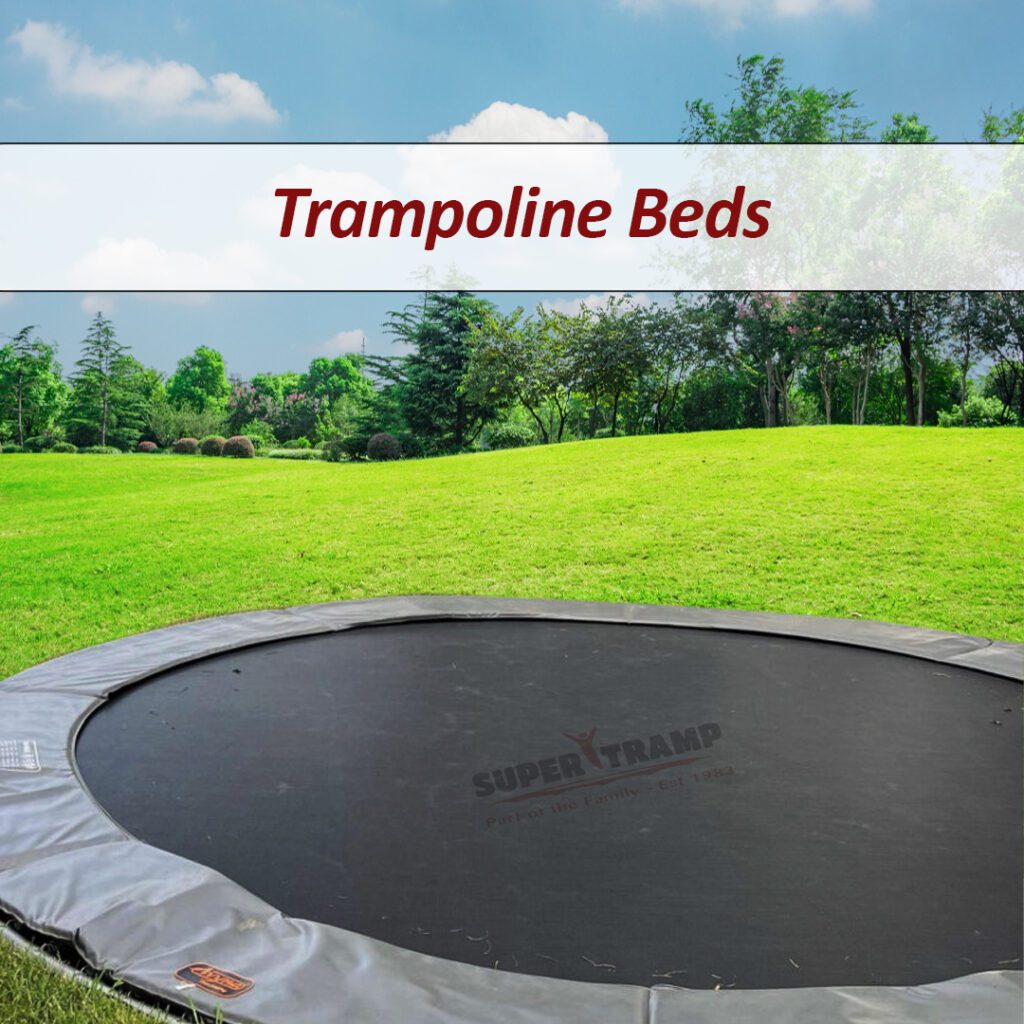
The trampoline bed, also known as the jumping mat or surface, is one of the most essential parts of your trampoline. It directly impacts the bounce quality, safety and durability. When choosing a replacement bed, consider the following:
Material
The most common materials are polypropylene and Permatron. Polypropylene trampoline beds are more affordable and weather-resistant. For recreational use, polypropylene is fine. For competitive gymnasts, Permatron is better.
Bed Size
Measure your trampoline frame to determine the correct bed size. Most recreational trampolines are 12ft, 14ft or 15ft in diameter. More extensive beds, especially those over 15ft, should only be used under adult supervision due to the higher risk of injury.
Weather Protection
For outdoor trampolines, choose a bed made of weather-resistant polypropylene that won’t fade or degrade in UV light or rain. Weather-resistant beds typically last 3-5 years.
Choosing a high-quality, adequately sized trampoline bed made of durable, weather-resistant material will maximise your trampoline’s safety, bounce and lifespan. Regular bed and padding inspections are also essential to ensure no tears, holes, or loose springs could lead to injury.
Conclusion
So now you know how to choose the correct trampoline spares to maximise performance and keep everyone bouncing safely. Don’t settle for cheap replacements that won’t last or fit properly. Do your research, check reviews, and invest in high-quality, compatible parts from reputable brands. You’ll have peace of mind knowing the trampoline is ready for many more high-flying adventures. Keep this guide handy when a mat, pad, or net needs replacing. Happy bouncing!
FAQ's
Does replacing the springs on your trampoline improve it?
Yes, replacing worn-out springs on your trampoline can enhance its performance. Fresh springs provide better bounce and overall stability, ensuring a safer and more enjoyable jumping experience.
How do I know if my trampoline springs are faulty?
Check for signs like rust, deformation, or reduced tension. If springs appear stretched or damaged, it’s time for replacement. Regularly inspecting springs ensures optimal trampoline functionality and user safety.
Should I lubricate trampoline springs?
Yes, applying a silicone-based lubricant to trampoline springs can prevent rust and enhance their lifespan. Lubrication also reduces friction, allowing smoother bouncing. Apply the lubricant sparingly, and avoid oil-based products that may attract dirt.
How often should I replace a trampoline mat?
The frequency of trampoline mat replacement depends on usage and weather exposure. Generally, consider replacement every 3-5 years. Inspect the mat regularly for signs of wear, tear, or damage to ensure safe bouncing.
Are trampoline pads necessary?
Yes, trampoline pads are essential for safety. They cover the springs and frame, preventing accidental contact and reducing the risk of injury. Regularly check and replace damaged or worn-out pads to maintain a secure jumping environment.

